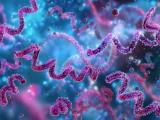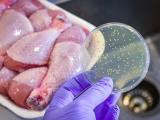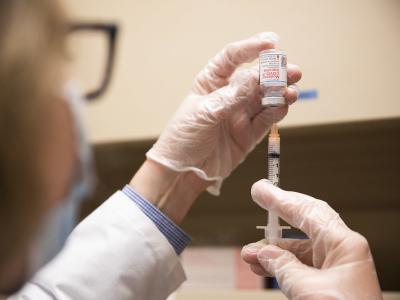July 2, 2002 (CIDRAP News) A recent series of 47 cases of salmonellosis in five states has linked an increasingly common multidrug-resistant strain of Salmonella enterica serotype Newport with ground beef, according to the Centers for Disease Control and Prevention (CDC).
The cases involve a strain called Newport MDR-AmpC, which has resistance or reduced susceptibility to ceftriaxone, a drug commonly used to treat serious infections in children, the CDC reported in the Jun 28 issue of Morbidity and Mortality Weekly Report. S Newport is the third most common Salmonella serotype in the United States and is often resistant to several antibiotics.
The outbreak, which lasted from January to April of this year, included 34 cases in New York, 5 in Michigan, 4 in Pennsylvania, 2 in Ohio, and 2 in Connecticut. The outbreak was first identified in February in New York. Thirty-three of the 47 patients were treated with antibiotics, and 17 were hospitalized. One patient who had leukemia suffered sepsis and died.
Testing with pulsed-field gel electrophoresis (PFGE) showed that 44 isolates had indistinguishable patterns and the other three differed by only one band. The CDC tested three isolates for antimicrobial susceptibility and found resistance to nine antimicrobials: amoxicillin/clavulanate, ampicillin, cefoxitin, ceftiofur, cephalothin, chloramphenicol, streptomycin, sulfamethoxazole, and tetracycline. In addition, two isolates had resistance or decreased susceptibility to ceftriaxone. This is the resistance profile of Newport MDR-AmpC, the report says.
In a case-control study, the CDC and New York state health officials interviewed 36 patients and 85 people matched by age-group and location. The study showed that 22 (67%) of 35 case-patients had eaten ground beef in the 3 days before they became ill, compared with 31 (53%) of 58 controls (odds radio [OR], 2.3; 95% confidence interval [CI], 0.9 to 5.7). The interviewees were also asked if they had eaten raw or undercooked ground beef. Twelve of the 26 case-patients who had clear recall said yes, versus only 1 of 80 controls (OR, 50.9; 95% CI, 5.3 to 489.0).
One patient had a leftover, uncooked, frozen meat loaf made from the same package of ground beef that was used in meals eaten in the 3 days before illness onset. A culture of the meat loaf yielded S Newport with a PFGE pattern matching that of the outbreak.
Newport MDR-AmpC has been found increasingly often since 1998, the CDC reports. That year, 1 of 78 isolates tested in the National Antimicrobial Resistance Monitoring System (NARMS) was Newport MDR-AmpC; in 2001 the number grew to 33 of 128 isolates. "Although the full clinical significance of Newport MDR-AmpC is unknown, treatment of these infections with ceftriaxone might be ineffective," the report states.
In the case-control study, 7 of 11 patients who could recall details said they had eaten lean or extra-lean ground beef. Dairy cattle are an important source of lean ground beef, the report says. In the past year and a half, several state health departments have linked exposure to dairy farms, sick cattle, and cheese made with unpasteurized milk with increased human infections with Newport MDR-AmpC. "These data suggest that cattle, particularly dairy cattle, might be a source for human Newport MDR-AmpC infection," the article says.
The CDC says this report is the first to connect eating of ground beef with Newport MDR-AmpC infections. The report also says that overall Salmonella prevalence in ground beef dropped from 7.5% in 1998 to 2.8% in 2001 in response to the adoption of Hazard Analysis and Critical Control Point (HACCP) systems, but "the emergence of Newport MDR-AmpC suggests that further measures might be necessary."
CDC. Outbreak of multidrug-resistant Salmonella NewportUnited States, January-April 2002
http://www.cdc.gov/mmwr/preview/mmwrhtml/mm5125a1.htm

















